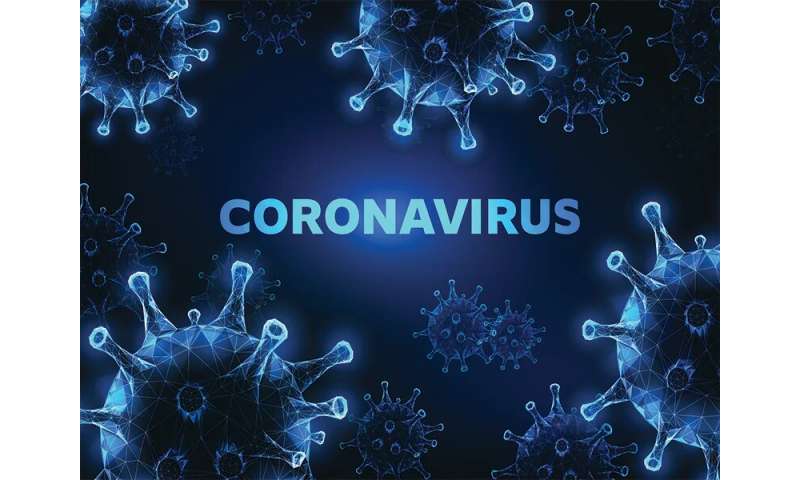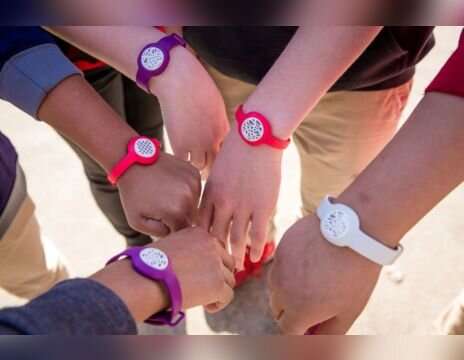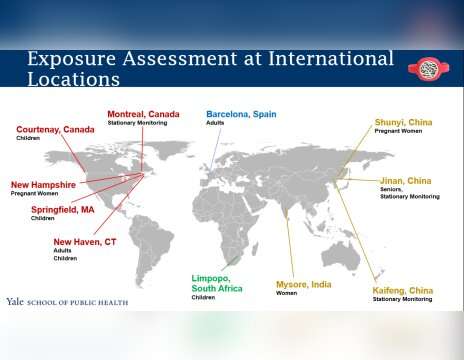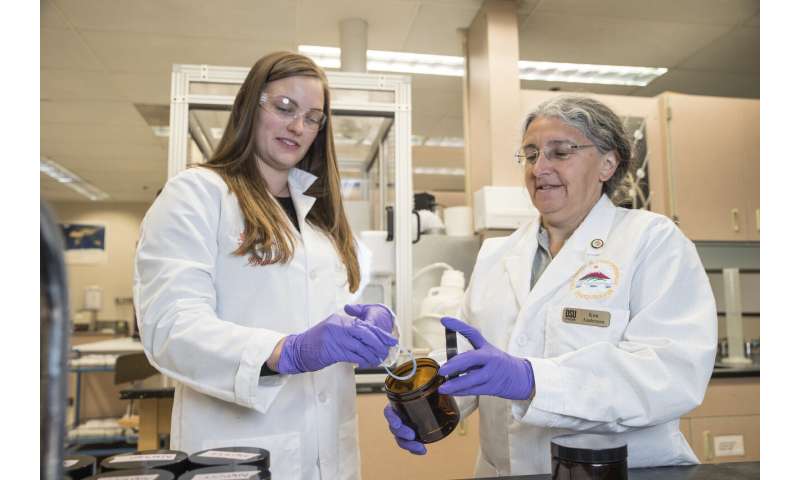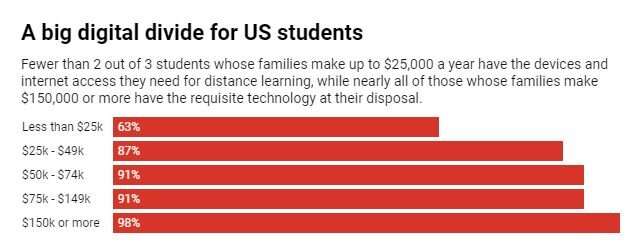by Laura Arenschield, The Ohio State University

Lonnie Thompson. Credit: The Ohio State University
Ice from glaciers around the world, undisturbed for centuries, show changes in how societies functioned throughout history—and will likely hold a record of the current impact of the COVID-19 pandemic for future generations.
The story of how the pandemic is affecting societies around the world is still unfolding, but ice accumulating on high-elevation ice fields around the world, as well as in Greenland, is almost certainly collecting physical, chemical and biological evidence of this time, said two researchers who have devoted their professional lives to studying ice.
"These records will be locked into the ice and preserved," said Lonnie Thompson, distinguished professor of earth sciences at The Ohio State University and a senior research scientist at Ohio State's Byrd Polar and Climate Research Center. "And that means that 100 or 200 years from now, that ice will be showing anything that is in the atmosphere now, and that will tell future generations about what is happening now."
There are signs already that the current COVID-19 pandemic is affecting Earth's atmosphere: As people stayed home and drove less, nitrogen dioxide and sulfur dioxide levels dropped over China and throughout much of the United States. Both are potent pollutants that primarily form by burning gas and oil—the fossil fuels that power most of our vehicles.
That decrease in nitrogen dioxide and sulfur dioxide levels will be evident in the nitrate and sulfate levels in ice cores retrieved by future glaciologists, Thompson said. There might be other signs of the pandemic that future scientists find in ice that is forming now—signs that today's scientists don't know about yet.
"Of course, this assumes that glaciers will continue to exist in the future," Thompson said.
Thompson for decades has led teams of scientists into some of the world's most remote areas to drill long columns of glacier ice, called cores. Snow and ice form each year on glaciers around the world. In the coldest parts of the planet, snow and ice don't melt—it all just accumulates year by year, stacking one year's snow and ice on top of all the previous years and on and on over thousands of years.
Snow and ice trap whatever is in the atmosphere at the time it forms. Researchers know that includes chemicals, minerals, as well as microbes such as bacteria and viruses, and other organic materials like the stems and leaves of plants.
That means the cores act as a timeline of sorts, in some cases showing changes in the atmosphere year-by-year, much like the rings of a tree.
In 2018, the ice core research team—which also includes microbiology professors and researchers from Ohio State—published a protocol for evaluating the cores for bacteria in the scientific journal Frontiers in Microbiology. A second paper describing a protocol for evaluating the cores for viruses is under review now.
The ice cores show environmental changes, both natural and those induced by humans. They show the onset of the Industrial Revolution in the late 1700s, and they point to the time when humans began adding chemicals, such as sulfate and nitrate, to the atmosphere and adding lead to gasoline. Ice cores also document the passage of the Clean Air Act in 1970, after which atmospheric sulfate concentrations have declined.
The cores also show the Plague, also known as the Black Death, a pandemic during the mid-1300s that remains the deadliest in recorded human history. On some glaciers the ice that formed during the years of the Plague contains less lead than ice that formed during preceding years, likely because mining and smelting activities sharply dropped off during that time, just as today, some industrial activities have stopped.
The cores show evidence of other disasters that severely affected the way humans live. During a major drought that lasted from around 1345 to 1390, Earth experienced the Black Death that peaked around 1350. As a result of the drought, lakes and other inland waters dried up and the chemical composition of the atmosphere changed—less moisture, more dust.
"The drought reduced the thickness of tree rings, but it also shows up in the ice cores in China and from Quelccaya ice cap in the Andes of Peru as decreases in the thickness of annual ice layers," Thompson said. "And we see higher levels of mineral dust and chloride and fluoride, which originate from evaporation as lakes dry up."
The cores show in part the way humans and the environment are connected, Thompson said. Because of that drought, people moved away from the farmlands where they'd lived for centuries and into cities. When the populations concentrated—and before humans developed better treatments and sanitation—illnesses, including the Plague, began to spread more easily.
The cores show physical changes, which can explain some of the science behind what happened around the world, but the researchers also need written histories from humans in order to understand exactly what happened. The cores show that in the mid-1300s something happened to increase dust in the atmosphere. But knowing exactly what occurred requires an understanding of what was happening in the world at that time.
"It's like being a detective as we are with the ice cores—if all you have are the ice core records, and you don't have the human history, you might miss the connection," said Ellen Mosley-Thompson, distinguished university professor of geography and a senior research scientist at the Byrd Center. "For example, if you are looking for evidence of old viruses, then you have to know precisely where to look in the cores."
Even more interesting, ice cores gathered from different places around the world show similar changes at the same times. For example, ice from the Huascarán in Peru and ice from the Tibetan Plateau in the Himalayan Mountains, as well as ice from Kilimanjaro in Africa, all show evidence of a drought around 4,200 years ago—the same signature of changes in dust, chemicals and isotope levels, half a world away.
The cores show the drought, but it is only with recorded histories that researchers see what happened: The drought, many scientists believe, led to the collapse of cultures around the world—the Akkadian empire in Mesopotamia, societies around the Indus River and the Yangtze River in Asia, and the Old Kingdom in Egypt.
"The ice core records, along with many other paleoclimate records, show evidence of a major drought throughout the low latitudes around the world," Mosley-Thompson said. "And at the same time, a number of societies collapsed, even though these societies were not physically connected at all."
The history in the cores—of humankind changing the environment, adjusting to those changes, and dealing with hardship as well as causing problems and trying to fix them—can remind us that we've dealt with issues like the COVID-19 pandemic before, Thompson said.
"To me, it's always: Can we look at our past history and determine how we behaved and how cultures survived these major events?" he said. "I suspect there are some lessons here that would be useful today."
Explore further
Ice from glaciers around the world, undisturbed for centuries, show changes in how societies functioned throughout history—and will likely hold a record of the current impact of the COVID-19 pandemic for future generations.
The story of how the pandemic is affecting societies around the world is still unfolding, but ice accumulating on high-elevation ice fields around the world, as well as in Greenland, is almost certainly collecting physical, chemical and biological evidence of this time, said two researchers who have devoted their professional lives to studying ice.
"These records will be locked into the ice and preserved," said Lonnie Thompson, distinguished professor of earth sciences at The Ohio State University and a senior research scientist at Ohio State's Byrd Polar and Climate Research Center. "And that means that 100 or 200 years from now, that ice will be showing anything that is in the atmosphere now, and that will tell future generations about what is happening now."
There are signs already that the current COVID-19 pandemic is affecting Earth's atmosphere: As people stayed home and drove less, nitrogen dioxide and sulfur dioxide levels dropped over China and throughout much of the United States. Both are potent pollutants that primarily form by burning gas and oil—the fossil fuels that power most of our vehicles.
That decrease in nitrogen dioxide and sulfur dioxide levels will be evident in the nitrate and sulfate levels in ice cores retrieved by future glaciologists, Thompson said. There might be other signs of the pandemic that future scientists find in ice that is forming now—signs that today's scientists don't know about yet.
"Of course, this assumes that glaciers will continue to exist in the future," Thompson said.
Thompson for decades has led teams of scientists into some of the world's most remote areas to drill long columns of glacier ice, called cores. Snow and ice form each year on glaciers around the world. In the coldest parts of the planet, snow and ice don't melt—it all just accumulates year by year, stacking one year's snow and ice on top of all the previous years and on and on over thousands of years.
Snow and ice trap whatever is in the atmosphere at the time it forms. Researchers know that includes chemicals, minerals, as well as microbes such as bacteria and viruses, and other organic materials like the stems and leaves of plants.
That means the cores act as a timeline of sorts, in some cases showing changes in the atmosphere year-by-year, much like the rings of a tree.
In 2018, the ice core research team—which also includes microbiology professors and researchers from Ohio State—published a protocol for evaluating the cores for bacteria in the scientific journal Frontiers in Microbiology. A second paper describing a protocol for evaluating the cores for viruses is under review now.
The ice cores show environmental changes, both natural and those induced by humans. They show the onset of the Industrial Revolution in the late 1700s, and they point to the time when humans began adding chemicals, such as sulfate and nitrate, to the atmosphere and adding lead to gasoline. Ice cores also document the passage of the Clean Air Act in 1970, after which atmospheric sulfate concentrations have declined.
The cores also show the Plague, also known as the Black Death, a pandemic during the mid-1300s that remains the deadliest in recorded human history. On some glaciers the ice that formed during the years of the Plague contains less lead than ice that formed during preceding years, likely because mining and smelting activities sharply dropped off during that time, just as today, some industrial activities have stopped.
The cores show evidence of other disasters that severely affected the way humans live. During a major drought that lasted from around 1345 to 1390, Earth experienced the Black Death that peaked around 1350. As a result of the drought, lakes and other inland waters dried up and the chemical composition of the atmosphere changed—less moisture, more dust.
"The drought reduced the thickness of tree rings, but it also shows up in the ice cores in China and from Quelccaya ice cap in the Andes of Peru as decreases in the thickness of annual ice layers," Thompson said. "And we see higher levels of mineral dust and chloride and fluoride, which originate from evaporation as lakes dry up."
The cores show in part the way humans and the environment are connected, Thompson said. Because of that drought, people moved away from the farmlands where they'd lived for centuries and into cities. When the populations concentrated—and before humans developed better treatments and sanitation—illnesses, including the Plague, began to spread more easily.
The cores show physical changes, which can explain some of the science behind what happened around the world, but the researchers also need written histories from humans in order to understand exactly what happened. The cores show that in the mid-1300s something happened to increase dust in the atmosphere. But knowing exactly what occurred requires an understanding of what was happening in the world at that time.
"It's like being a detective as we are with the ice cores—if all you have are the ice core records, and you don't have the human history, you might miss the connection," said Ellen Mosley-Thompson, distinguished university professor of geography and a senior research scientist at the Byrd Center. "For example, if you are looking for evidence of old viruses, then you have to know precisely where to look in the cores."
Even more interesting, ice cores gathered from different places around the world show similar changes at the same times. For example, ice from the Huascarán in Peru and ice from the Tibetan Plateau in the Himalayan Mountains, as well as ice from Kilimanjaro in Africa, all show evidence of a drought around 4,200 years ago—the same signature of changes in dust, chemicals and isotope levels, half a world away.
The cores show the drought, but it is only with recorded histories that researchers see what happened: The drought, many scientists believe, led to the collapse of cultures around the world—the Akkadian empire in Mesopotamia, societies around the Indus River and the Yangtze River in Asia, and the Old Kingdom in Egypt.
"The ice core records, along with many other paleoclimate records, show evidence of a major drought throughout the low latitudes around the world," Mosley-Thompson said. "And at the same time, a number of societies collapsed, even though these societies were not physically connected at all."
The history in the cores—of humankind changing the environment, adjusting to those changes, and dealing with hardship as well as causing problems and trying to fix them—can remind us that we've dealt with issues like the COVID-19 pandemic before, Thompson said.
"To me, it's always: Can we look at our past history and determine how we behaved and how cultures survived these major events?" he said. "I suspect there are some lessons here that would be useful today."
Explore further
More information: Zhi-Ping Zhong et al. Clean Low-Biomass Procedures and Their Application to Ancient Ice Core Microorganisms, Frontiers in Microbiology (2018).
Provided by The Ohio State University
SEE https://plawiuk.blogspot.com/2020/05/are-there-zombie-viruses-in-thawing.html
Release date. August 30, 2009 (2009-08-30) (Nuremberg Fantasy Filmfest). Country, United States Canada. Language, English. The Thaw is a 2009 American science fiction horror thriller film directed by Mark A. Lewis and ... They transport the polar bear to their research station. David calls his daughter Evelyn (Martha ...
30,000-year-old giant virus 'comes back to life' - BBC News
https://www.bbc.com › news › science-environment-26387276
Mar 4, 2014 - An ancient virus has been brought back to life after lying dormant for 30000 years in the Siberian permafrost, scientists say.
Earth - There are diseases hidden in ice, and they are ... - BBC
www.bbc.com › earth › story › 20170504-there-are-diseases-hidden-in-ice...
May 4, 2017 - Long-dormant bacteria and viruses, trapped in ice and permafrost for centuries, ... and as the soils melt they are releasing ancient viruses and bacteria that, ... in the Arctic Circle, a 12-year-old boy died and at least twenty people were ... takes about 10,000 years for water from the surface to get into the cave.
Scientists discover nearly 200,000 viruses hidden in the ...
https://www.ctvnews.ca › sci-tech › scientists-discover-nearly-200-000-virus...
Apr 29, 2019 - Nearly 200000 new marine viruses were identified in the Earth's ... sea ice along the Northwest Passage in the Canadian Arctic Archipelago. ... Thawing permafrost may release carbon and methane, contributing to further global warming ... hole at Copernicus' Atmospheric Monitoring Service (CAMS) made ...
Will the next great pandemic come from the permafrost? | The ...
https://thenarwhal.ca › next-great-pandemic-permafrost
Apr 10, 2020 - As the Arctic warms, 'zombie' viruses and microbes are rising from the thawing ground. ... Like a scene out of a sci-fi movie, the scientists thawed it and ... opening up new ways for microbes to get around and infect animals and humans. ... The final report of the meeting in Hannover hasn't been released yet.

